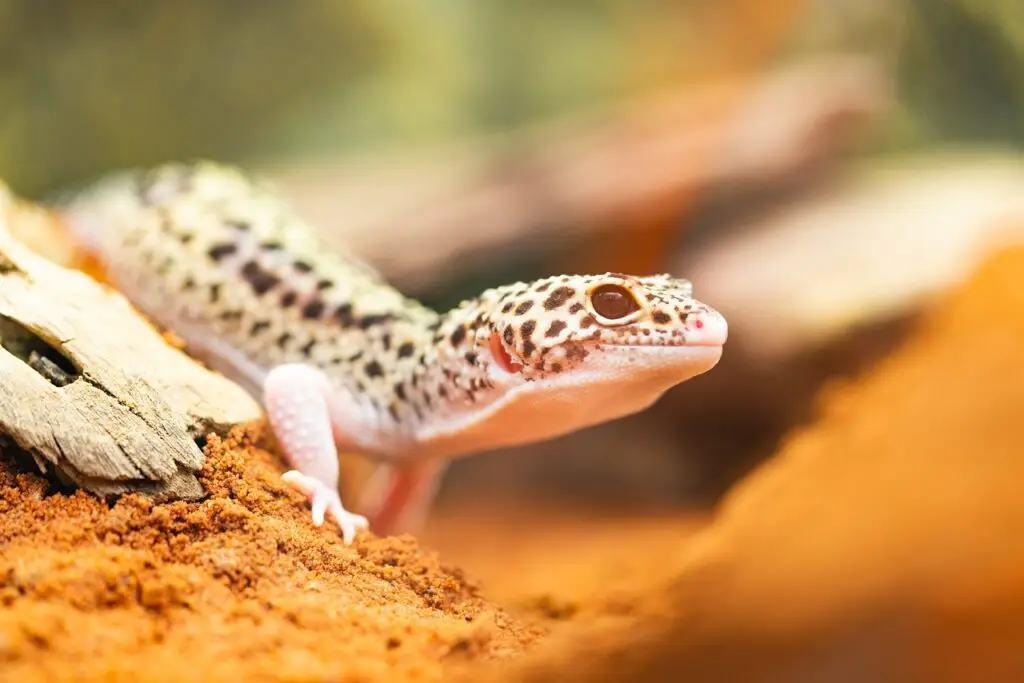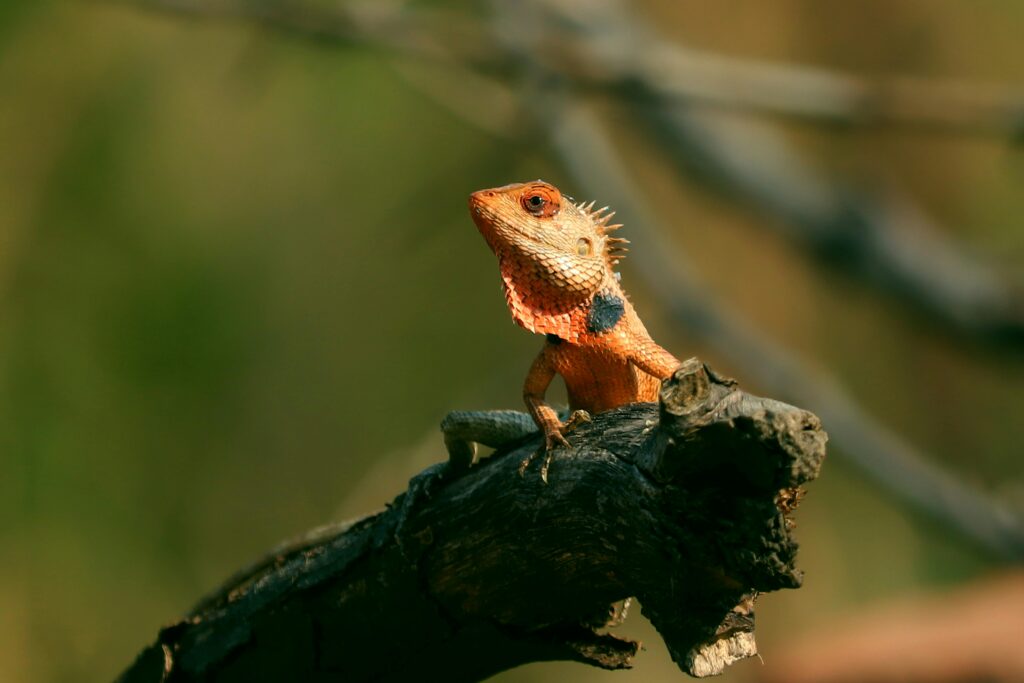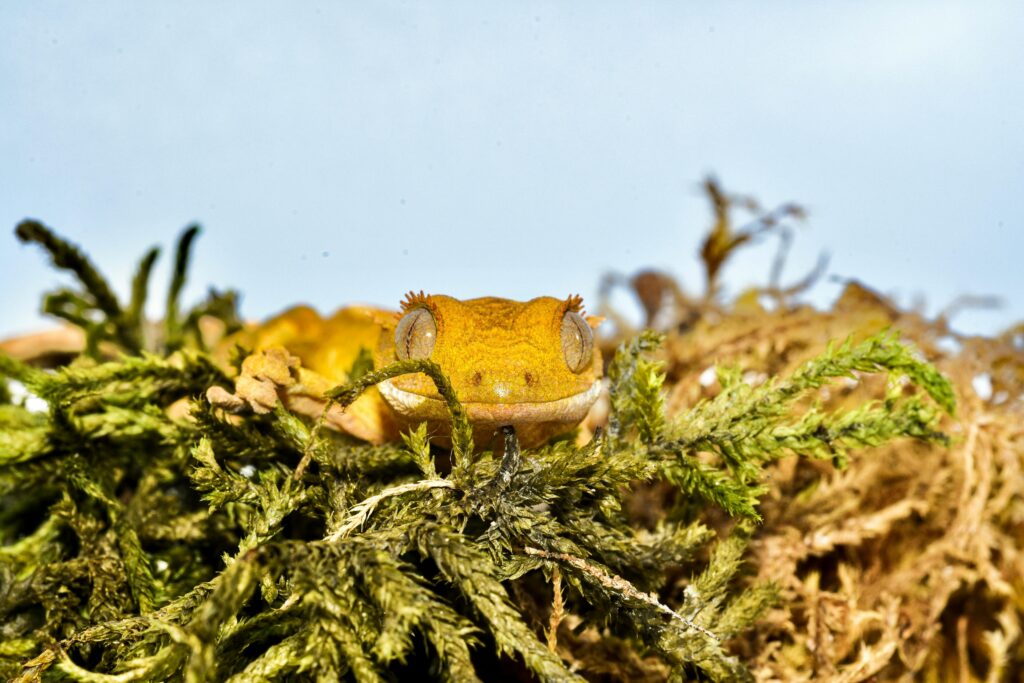Are Terrapins Reptiles or Amphibians?
If you have ever encountered a terrapin, you may have wondered if it’s a reptile or an amphibian. The answer is straightforward: terrapins are reptiles. Let’s look a little closer at why this is so and examine some of the features that make terrapins unique members of the reptile family.
What Are Terrapins?
These tiny to medium-sized turtles typically inhabited freshwaters or brackish environment-like marshes, ponds, and estuaries. Most of them are confusing it with a turtle or tortoise, are extremely disparate in habitat usage and physical attributes. The name “terrapin” adapted from an Algonquian word, signified as “edible turtle”. Commonly existents in North America.
Especially, terrapins are adapted both to aquatic and terrestrial environments. Most of them live in so-called mixing areas of freshwater and saltwater-an environment not found among other turtles. Their viability in these conditions has made them the objects of great interest for biologists and ecologists.
Why Are Terrapins Reptiles?
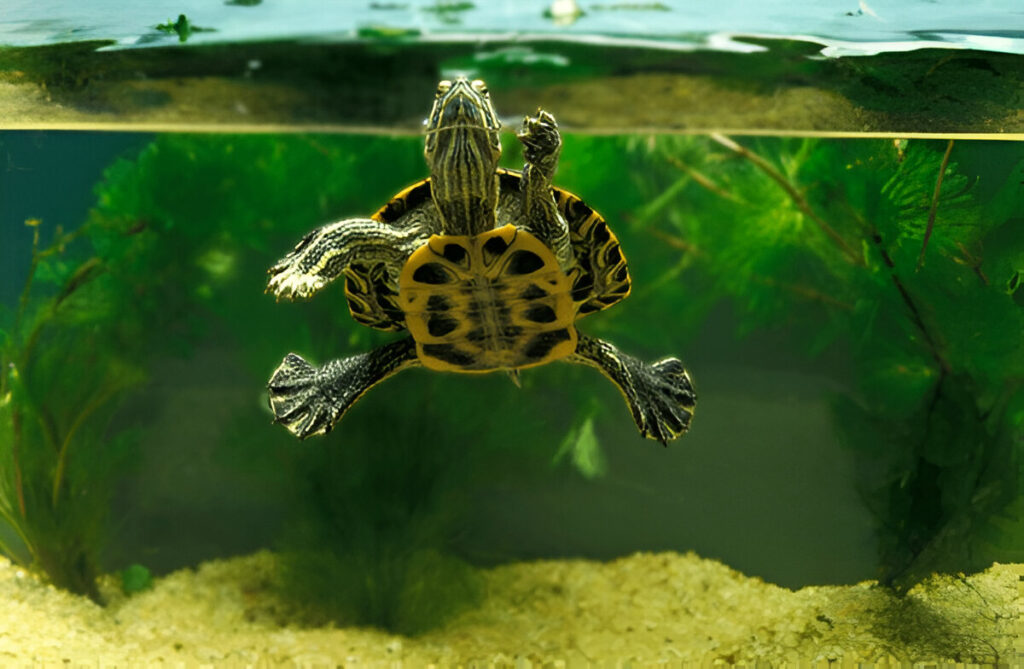
Reptiles and amphibians are both cold-blooded vertebrates, meaning they rely on external heat sources to regulate their body temperature. However, they have several key differences that set them apart. Terrapins, despite their semi-aquatic lifestyle, are firmly classified as reptiles. Here’s a detailed explanation of why terrapins fall into the reptile category:
Are Terrapins Reptiles or Amphibians?
1. Scaly Skin
Among the defining features of reptiles are their dry and scaly skin, enabling them to minimize water loss, thus surviving even in arid conditions. All reptiles have bodies covered with hard, keratinized scales, and so do the terrapins. The most characteristic feature of the body plan of a terrapin is the bony shell consisting of two parts:
- Carapace: Top part of the shell.
- Plastron: The ventral portion of the shell.
The shell is fused to the terrapin’s ribs and spine, which protects the terrapin, supports it structurally as well. Scaly, armored skin like this is characteristic of reptiles, whereas the moist, smooth skin of amphibians requires constant moisture to maintain hydration and thus is not found in a saltwater environment.
2. Eggs with Shells
Another important difference between reptiles and amphibians is their mode of reproduction. Reptiles lay amniotic eggs with either hard or leathery shells. These eggs are adapted for dry environments, with a protective layer around the developing embryo. Terrapins lay their eggs on land, often digging nests in sandy or muddy areas near water. The leathery shell of their eggs prevents desiccation and allows them to develop safely outside of water.
On the other hand, amphibians lay eggs which are soft, jelly-like, and without protective shells. They have to be laid in water or very wet areas because they will dehydrate if they are not kept moist. The fact that terrapins lay their eggs on land and give them a protective shell is a definite reptilian characteristic.
3. Lungs for Breathing
Like all reptiles, terrapins, from the time of their birth, breathe only through lungs. While terrapins spend a great amount of time in the water, they cannot extract oxygen from it like amphibians during their larval stage. Instead, terrapins need to come up to take in air. Although they do hold their breath for a very long time, enabling them to stay submerged while they forage or else avoid predators, they basically rely on their lungs for oxygen.
Whereas anamniotic amphibians usually possess gills in their larval stages-a good example is tadpoles-and develop lungs when they become adults, some amphibians, such as frogs, have the ability to breathe through their permeable skin, which needs moisture for respiration. This ability is lacking in terrapins, and for this reason, they are firmly placed among reptiles.
4. Cold-Blooded Nature
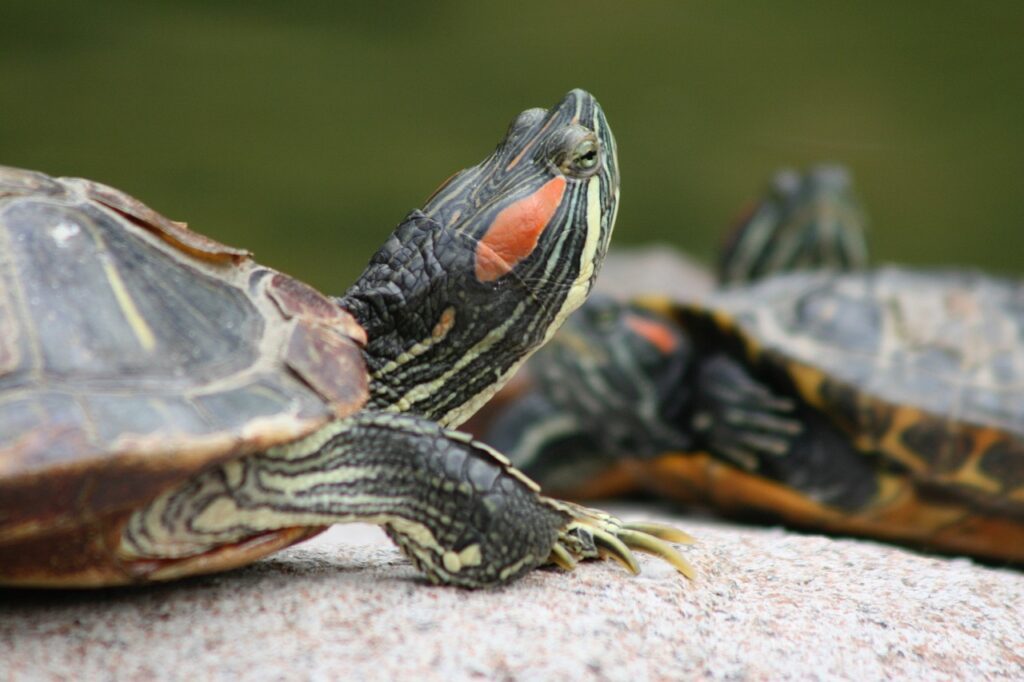
Image by Redkite
Both reptiles and amphibians are ectothermic-cold-blooded-relying on external heat sources to regulate their body temperature. However, this does not by itself constitute an amphibian. Like all reptiles, terrapins bask in the sun to warm up and seek shade or water to cool down. This behavior is very important to them for maintaining their metabolic processes, such as digestion and activity levels.
While amphibians are also cold-blooded, their requirement for moist conditions and their complicated life cycles-e.g., metamorphosis-set them apart from reptiles. The terrapins do not undergo metamorphosis, as they hatch from their eggs in miniature versions of adults and grow steadily over a period of time.
5. Additional Reptilian Traits
In addition to the main characteristics identified above, terrapins also share the following reptilian traits:
- Clawed Feet: Terrapins have clawed feet, which are useful for digging nests and navigating both land and water. Amphibians usually have softer, less defined digits.
–No Metamorphosis: Whereas amphibians undergo dramatic changes, such as the transformation of tadpoles into frogs, terrapins hatch from their eggs as fully formed, though tiny, versions of adults. - Salt Glands: Some terrapins, like the diamondback terrapin, have a pair of glands near their eyes that excrete excess salt. Such adaptations enable them to thrive in brackish water-a mix of fresh and saltwater-a medium which is not suitable for most amphibians.
Why These Traits Matter
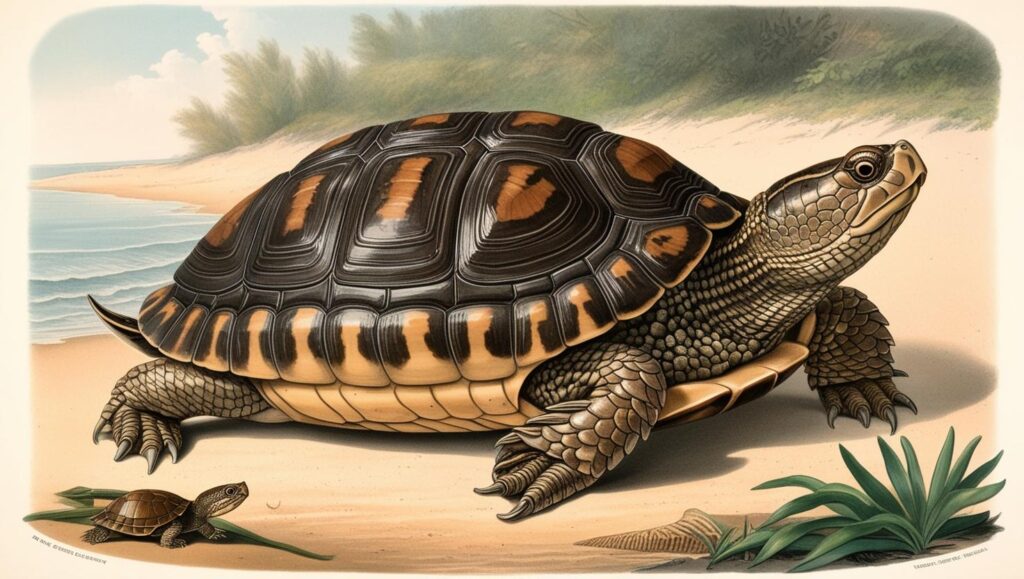
Are Terrapins Reptiles or Amphibians?
The scaly skin, laying of eggs on land, breathing through lungs, among other reptilian characteristics, have placed terrapins in the category of reptiles. Though similar to amphibians in some respects—such as the need for water to survive—their biological and physiological characteristics place them more in line with reptiles like turtles, snakes, and lizards.
These distinctions enable us to appreciate life’s diversity and the particular adaptations that have enabled species like terrapins to thrive in their environments. Indeed, terrapins epitomize how reptiles have evolved to occupy an amazing breadth of habitats, from freshwater ponds to brackish estuaries.
Terrapins vs. Amphibians
Although terrapins and amphibians look a little similar, given that both may be associated with water, they are completely different classes of animals with totally different biological and physiological characteristics. The following is an expanded comparison of terrapins (reptiles) and amphibians, showing key differences and similarities between them. The differences are outlined in the comparison below.
Habitat and Lifestyle
Terrapins: The terrapin is a semi-aquatic reptile found in freshwater or brackish environments, including marshes, ponds, and estuaries. They are very adaptable and can easily move from water to land. Although they spend much time in the water, they do come onto land to bask, nest, and forage.
- Amphibians: Like reptiles, amphibians are also closely tied to water, but their dependence is more pronounced. Most amphibians require water for breeding and laying eggs, and many species spend their larval stages entirely in water. As adults, some amphibians-like frogs-may live near water or in moist terrestrial environments, but they remain highly dependent on moisture because of their permeable skin.
Skin and Body Covering
- Terrapins: Terrapins have dry, scaly skin covered with a hard bony shell for protection of the body. The skin is keratinized to prevent water loss, thus allowing them to exist in almost any environment, from totally aquatic to drier terrestrial environments. The shell is present only in turtles and terrapins and is a unique feature meant for protection and structural purposes.
- Amphibians: Amphibians have smooth, moist skin that is highly permeable. Such skin allows them to take in water and oxygen directly from the environment. For this reason, amphibians are usually restricted to moist or aquatic habitats. The absence of protective skin scales or shells makes their body more fragile compared to terrapins.
Reproduction and Life Cycle
All the same, terrapins lay eggs with leathery shells on land in predominantly dug nests in sand or mud. Amniotic eggs with their protective membranes are adapted to develop, without water. Terrapins do not have a metamorphosis like frogs do; instead, their young hatch out as little adults, looking much the same as grownups and grow slowly into larger individuals over time.
- Amphibians: Amphibians lay soft, jelly-like eggs in water or very moist environs. The eggs, without a protective shell, need the presence of water as dehydrating would ensue. Amphibians typically have metamorphoses from aquatic larvae in the form of a tadpole to a terrestrial or semi-aquatic adult. Such a dramatic change is one of the hallmarks for amphibians and not seen in terrapins.
Breathing and Respiration
Terrapins breathe only through their lungs their entire lives. Though they can stay submerged in water for a long period of time, they must come up to the surface to take in air. Their respiration via lungs is characteristic of reptiles.
- Amphibians: Amphibians have a more complex respiratory system that changes throughout their life cycle. As larvae, many amphibians breathe through gills. As adults, they develop lungs but often rely on cutaneous respiration (breathing through their skin) as well. This dual respiratory system requires their skin to remain moist, further tying them to aquatic or humid environments.
Adaptability to Environments
-Terrapins can thrive in so many different environmental areas, ranging from fresh water, brackish water, to even terrestrial environments. Having scaly skin and a protective shell enables the terrapins to easily venture onto land with no risk of dehydration. Even the diamondback terrapin species adapted to live in brackish water, thanks to special salt-excreting glands.
- Amphibians: Amphibians are less tolerant of dry environments because their skin is permeable and, usually, they reproduce in water. Some species of toads are found in drier habitats, but still must have water or moisture for their survival. Amphibians are generally more sensitive to environmental changes and, hence, suffer greatly from habitat loss and pollution.
Diet and Feeding Habits
They are omnivorous, feeding on a wide variety of plants, insects, small fish, and crustaceans. Their diet often depends on their habitat and the availability of food. Being opportunistic feeders, terrapins have strong jaws that can crush prey or be used to graze on vegetation.
- Amphibians: Amphibians are mostly carnivorous, especially as adults. For example, frogs and salamanders feed on insects, worms, and small invertebrates. As larvae, most amphibians are herbivorous or detritivorous feeding on algae or organic matter in the water.
Lifespan and Growth
Terrapins: The terrapin has a rather long life, living for many decades. They grow all through their lives, and the shell grows as they grow older. There are no dramatic changes in the physical appearance of terrapins after they hatch.
- Amphibians: Amphibians are not as long-lived as terrapins. During the development phase, they undergo remarkable physical metamorphosis: in the case of frogs, it entails the development of limbs and loss of gills. This transformation characterizes the amphibians and is unique from the reptiles, such as terrapins.
Key Similarities
Despite their differences, terrapins and amphibians share a few similarities:
- Cold-blooded nature: Both are ectothermic, relying on the environment for heat .
- Association with water: Both are found in or around water, but to different extents.
- Ecological roles: Both play important roles in their ecosystems, serving as both predators and prey and contributing to nutrient cycling.
Fun Facts About Terrapins
Excellent Swimmers: Even though terrapins are excellent swimmers, they can also walk on land. While their webbed feet make them agile in water, their strong legs make them surefooted on land.
- Omnivorous Diet: They are omnivores; their diet includes plants, insects, and small aquatic animals. Their diets may vary as influenced by habitat and food accessibility.
Diamondback Terrapin: Probably the best-known species, the diamondback terrapin is native to the coastal marshes of the eastern United States. They get their name from the diamond-shaped patterns on their shells. - Long Life Span: Most terrapin species are long-lived; many species may live 40 years or more in the wild.
- Special Adaptations: A special adaptation of terrapins includes salt-excreting glands near the eye, enabling them to subsist in water with brackish conditions.
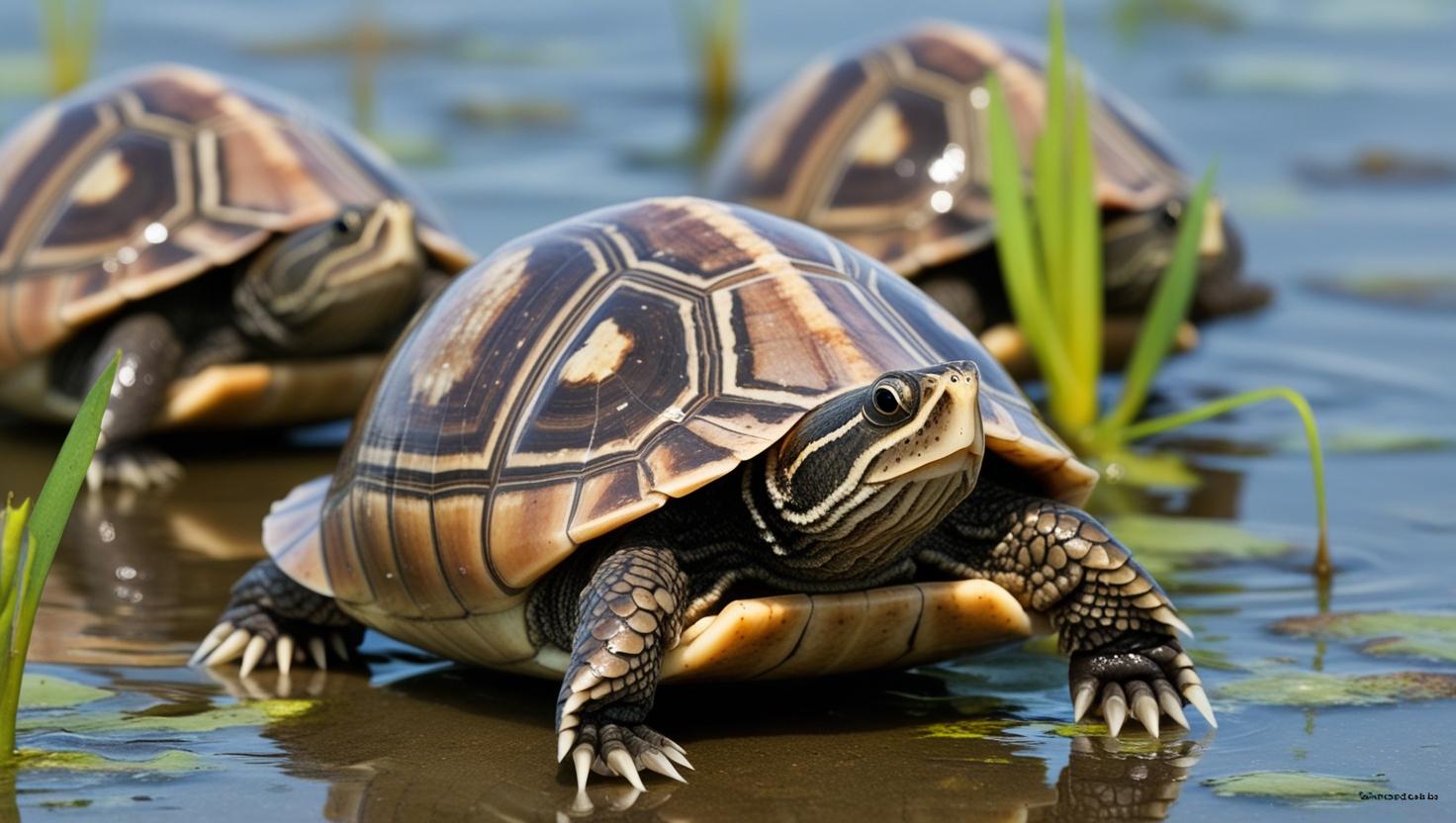
Conclusion
Terrapins are quite interesting creatures because they belong to the reptile family. The scaly skin, respiration through lungs, and laying of eggs on land surely distinguish them from amphibians. So, next time you come across a terrapin basking in the sun or swimming in a pond, you know you are looking at a reptile!
Terrapins are very important in their ecosystems, balancing between aquatic and terrestrial environments. Their adaptations and behaviors make them of interest to scientists and nature enthusiasts alike. Whether you’re a seasoned herpetologist or just someone who enjoys learning about wildlife, terrapins offer a wealth of fascinating insights into the world of reptiles.
FAQ: Are Terrapins Reptiles or Amphibians?
1. Are terrapins reptiles or amphibians?
Terrapins are reptiles. Despite their semi-aquatic lifestyle, they possess key reptilian traits such as scaly skin, lungs for breathing, and the ability to lay eggs with protective shells on land.
2. What makes terrapins reptiles?
Terrapins are classified as reptiles because they have:
- Scaly, dry skin: Their skin is covered with keratinized scales, which prevent water loss.
- Amniotic eggs: They lay eggs with leathery or hard shells on land.
- Lungs for breathing: They rely on lungs to breathe air, even though they spend much of their time in water.
- Cold-blooded nature: They regulate their body temperature using external heat sources.
3. How are terrapins different from amphibians?
While both terrapins and amphibians are cold-blooded and often associated with water, they differ in several ways:
- Skin: Terrapins have dry, scaly skin, while amphibians have moist, permeable skin.
- Reproduction: Terrapins lay eggs with shells on land, while amphibians lay soft, jelly-like eggs in water.
- Breathing: Terrapins breathe only through lungs, while amphibians may use gills, lungs, or their skin.
- Life cycle: Terrapins do not undergo metamorphosis, whereas amphibians (like frogs) do.
4. Where do terrapins live?
Terrapins are semi-aquatic and typically inhabit freshwater or brackish environments such as marshes, ponds, and estuaries. Some species, like the diamondback terrapin, are adapted to live in brackish water (a mix of fresh and saltwater).
5. What do terrapins eat?
Terrapins are omnivores, meaning they eat both plants and animals. Their diet includes:
- Aquatic plants
- Insects
- Small fish
- Crustaceans
Their diet varies depending on their habitat and food availability.
6. How do terrapins reproduce?
Terrapins lay eggs with leathery shells on land, usually in sandy or muddy areas near water. The eggs are amniotic, meaning they have a protective membrane that allows them to develop outside of water. Hatchlings emerge as miniature versions of adults and grow over time.
7. Can terrapins live in saltwater?
Some terrapins, like the diamondback terrapin, can live in brackish water (a mix of fresh and saltwater). They have special salt-excreting glands near their eyes to remove excess salt from their bodies.
8. How long do terrapins live?
Terrapins are long-lived animals, with many species living 40 years or more in the wild. Their lifespan depends on factors like habitat, diet, and predation.
9. Do terrapins have shells?
Yes, terrapins have a bony shell that consists of two parts:
- Carapace: The top part of the shell.
- Plastron: The bottom part of the shell.
The shell is fused to their ribs and spine, providing protection and structural support.
10. Are terrapins good swimmers?
Yes, terrapins are excellent swimmers. They have webbed feet that help them navigate through water. However, they are also capable of walking on land and often come ashore to bask or nest.
11. What is the difference between a terrapin, a turtle, and a tortoise?
- Terrapins: Semi-aquatic reptiles that live in freshwater or brackish environments.
- Turtles: Primarily aquatic reptiles that live in oceans, rivers, or lakes.
- Tortoises: Land-dwelling reptiles that live in dry environments and have dome-shaped shells.
12. Why are terrapins important to their ecosystems?
Terrapins play a vital role in their ecosystems by:
- Acting as both predators and prey.
- Helping control populations of insects, fish, and crustaceans.
- Contributing to nutrient cycling in their habitats.
13. Can terrapins breathe underwater?
No, terrapins cannot breathe underwater. They rely on their lungs to breathe air and must come to the surface to take in oxygen. However, they can hold their breath for extended periods while submerged.
14. Do terrapins hibernate?
Some terrapin species hibernate during colder months. They burrow into mud or sand at the bottom of ponds or marshes and enter a state of dormancy until temperatures rise.
15. What are some unique adaptations of terrapins?
Terrapins have several unique adaptations, including:
- Salt-excreting glands: Found in species like the diamondback terrapin, these glands help them survive in brackish water.
- Webbed feet: Ideal for swimming and navigating aquatic environments.
- Strong jaws: Used for crushing prey and grazing on vegetation.
16. Are terrapins endangered?
Some terrapin species, like the diamondback terrapin, face threats due to habitat loss, pollution, and human activities. Conservation efforts are underway to protect these unique reptiles.
17. Can terrapins be kept as pets?
Yes, terrapins can be kept as pets, but they require specific care, including:
- A suitable aquatic habitat with clean water.
- A balanced diet of plants and protein.
- Proper lighting and temperature regulation.
- Regular veterinary check-ups.
18. What is the most well-known terrapin species?
The diamondback terrapin is one of the most well-known terrapin species. It is native to the coastal marshes of the eastern United States and is named for the diamond-shaped patterns on its shell.
19. Do terrapins have predators?
Yes, terrapins face predators such as:
- Birds (e.g., herons and eagles)
- Raccoons
- Foxes
- Large fish
Their shells provide some protection, but hatchlings and eggs are particularly vulnerable.
20. Why are terrapins fascinating to scientists?
Terrapins are of great interest to scientists because of their unique adaptations, such as their ability to thrive in brackish water and their long lifespans. They also serve as important indicators of environmental health in their habitats.


